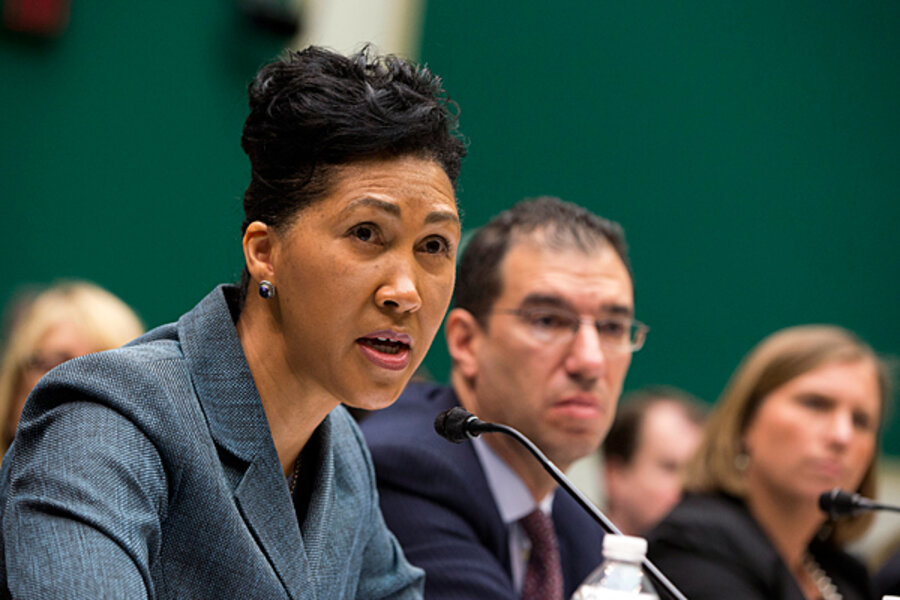Not enough pre-launch testing of Obamacare website, contractors testify
Loading...
| Washington
Contractors who helped to build the troubled sign-up website for Obamacare said Thursday that an insufficient testing process contributed to an error-prone rollout.
They put blame on the Obama administration – specifically the health agency that had the key role of “systems integrator” for the Healthcare.gov website – for the last-minute nature of the testing.
The statements came in a hearing held by the House Energy and Commerce Committee, with Republicans and Democrats alike lamenting the site’s poor performance.
At the same time, the contractors expressed optimism that the website could be made to work adequately without a wholesale software rewrite.
“As painful as it sounds, ... the system is working,” Cheryl Campbell of the firm CGI Federal said at the hearing. “People will be able to enroll at a faster pace,” she asserted, with time to enroll and have coverage start by Jan. 1, 2014, if they want.
When asked if she could give a date when the site would be fixed, however, Ms. Campbell did not give a direct estimate. “I cannot give you an exact date,” she testified, saying that doing so could “raise expectations.”
The hearing marks the first time members of Congress have held a public inquiry into the technical problems that have dogged the rollout of health insurance “exchanges” under the Affordable Care Act, or "Obamacare." Although some states are managing their own exchanges for residents to shop for insurance, 36 states are relying on the HealthCare.gov website as their gateway.
Four panelists from different companies generally refrained from overt criticism of the federal Centers for Medicare and Medicaid Services (CMS), which took the lead role in creating the website. But when prompted in questioning, they said that “end-to-end” testing of the system began unusually late for such a large and complex project.
Campbell and Andrew Slavitt of Optum/QSSI said integrated testing was conducted in just the final couple of weeks before the website’s launch date of Oct. 1 – the date set for the public to begin Obamacare enrollment.
Under the law, Americans must have insurance in place by March 31 next year or owe a tax penalty.
“Months would be nice” for the testing process, Mr. Slavitt told the lawmakers.
“It would have been better to have more time,” Campbell said. She said that when new software was needed in 2006 to open up access for prescription-drug coverage within Medicare, the testing period was months long. And even with that, the rollout for that Medicare expansion wasn’t smooth.
Several lawmakers described trying and failing in their own efforts to register on the website.
Slavitt said he, too, had encountered a system failure. He signed up but never got a confirmation e-mail.
“I was kicked out four times” and sometimes got blank screens, says Rep. Steve Scalise (R) of Louisiana. “Clearly [proper testing] didn't happen in this case.”
The contractors deflected questions about whether they thought politics had played a role in how CMS managed the software project – including a last-minute switch that shut off a “window shopping” feature that would allow people to browse plans without creating a personal account on the website.
"I was not given a reason" for the change, Campbell said.
According to some news reports, that decision stemmed from concern that Americans would have sticker shock on prices without learning that they might be eligible for subsidies.
A spokeswoman for CMS, in a separate briefing for reporters, expressed confidence that the website's performance is improving day by day, and that Americans will be able to get enrolled by mid-December, in order to have coverage start on Jan. 1.
While the contractors didn’t levy harsh criticism of CMS, which is employing them for lucrative contracts, neither did they place much blame on their companies.
“I haven't heard one of you apologize,” said Rep. David McKinley (R) of West Virginia.
“We absolutely take accountability for those first days when our tool was [not working properly],” Slavitt said at one point in the hearing.






